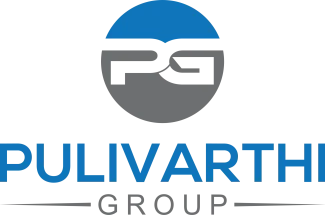In the ever-evolving landscape of human resources and staffing, the integration of AI in payroll systems has become increasingly essential. Traditional payroll methods often succumb to inefficiencies, leading to errors and delays that can hinder operational effectiveness. However, with the rise of payroll automation, organizations now have an opportunity to transform their payroll functions into a strategic asset. This blog post explores how AI can streamline payroll processes, enhance accuracy, and ensure compliance, making it indispensable for HR professionals and payroll managers alike.
The Inefficiency of Traditional Payroll Methods
Most organizations have relied on conventional payroll practices, which often involve manual calculations, spreadsheets, and tedious paperwork. These methods not only consume significant time but also introduce a higher risk of errors. For example, according to a recent survey, over 40% of HR professionals reported that payroll errors were a major concern, leading to dissatisfaction among employees and compliance issues with tax regulations.
As businesses grow and the complexity of payroll increases, these traditional methods become increasingly unsustainable. Clinging to outdated practices could severely hinder a company’s ability to meet employee expectations and regulatory demands. Therefore, recognizing the limitations of conventional payroll is the first step toward embracing innovative solutions.
How AI Transform Payroll Functions
So, how does AI improve the efficiency and effectiveness of payroll processing? AI enhances payroll functions in several key ways:
- Automation of Repetitive Tasks: AI-driven payroll systems can automate repetitive tasks such as data entry and calculations. This shift minimizes human error and accelerates the payroll cycle.
- Enhanced Data Accuracy: By utilizing machine learning algorithms, AI systems can analyze data to identify patterns and anomalies, ensuring correct calculations in real-time.
- Streamlined Compliance: AI can keep up-to-date with the latest tax laws and regulatory requirements, ensuring that payroll complies with local laws.
- Improved Employee Experience: AI-powered portals enable employees to access their payroll information easily, fostering transparency and enhancing satisfaction.
Case Studies: Successful AI Implementation in Payroll
Companies across various sectors have reaped the benefits of integrating AI into their payroll systems. For instance:
- Global Corp: After implementing AI-driven payroll software, this multinational organization reduced payroll processing time by 50%, significantly decreasing errors and increasing employee satisfaction.
- Tech Innovators: With AI, this tech company streamlined their compensation structure, automatically adjusting salaries based on role assessments and performance reviews, resulting in fairer pay practices.
These case studies demonstrate how businesses can leverage AI in payroll to gain a competitive edge and enhance operational efficiency.
Addressing Challenges with AI Solutions
Despite the clear advantages of AI, HR professionals may still face challenges in implementing these systems. Common concerns include:
- Initial Investment: Transitioning to a new payroll system may involve a steep initial investment. However, organizations should consider the long-term cost savings and efficiency gains that AI provides.
- Resistance to Change: Staff may be hesitant to adopt new technologies. Engaging employees in the transition process and providing adequate training can help mitigate fears and resistance.
- Data Security: With the rise of digital systems, ensuring data security is critical. Organizations must choose reputable AI vendors that prioritize data protection.
Unlocking the Strategic Potential of Your Payroll Department
Transforming payroll into a strategic asset requires a strategic mindset alongside the technological upgrades. Here’s how to harness AI effectively:
- Assess Your Current System: Evaluate your current payroll processes to identify areas of inefficiency and potential integration points for AI.
- Invest Wisely: Select payroll automation software that encompasses AI capabilities tailored to your organization’s unique needs.
- Train Your Team: Ensure your HR and payroll staff are well-trained on the new system to maximize its benefits.
- Monitor and Adjust: After implementation, monitor the system’s effectiveness. Be prepared to make adjustments based on feedback from users.
The Future of Payroll Management
The future of payroll management lies in innovation and adaptability. Companies that embrace AI-driven solutions will not only enhance their payroll accuracy and efficiency but also position themselves as forward-thinking leaders in the HR landscape. As automation becomes the norm, organizations can expect to see greater compliance, better employee satisfaction, and more time to focus on strategic initiatives.
Conclusion
In the dynamic world of HR and staffing, the integration of AI in payroll is no longer optional; it is essential for maintaining a competitive edge. By moving away from traditional payroll methods and adopting automation, organizations can transform payroll into a strategic asset. As you consider the benefits of AI, remember that leading the change in payroll practices can set a precedent for organizational success. Are you ready to take the first step towards revolutionizing your payroll system?
Leverage the expertise of Pulivarthi Group to guide your organization through this transformative journey. Together, let’s embrace innovation in payroll management and redefine the future of your workforce.






